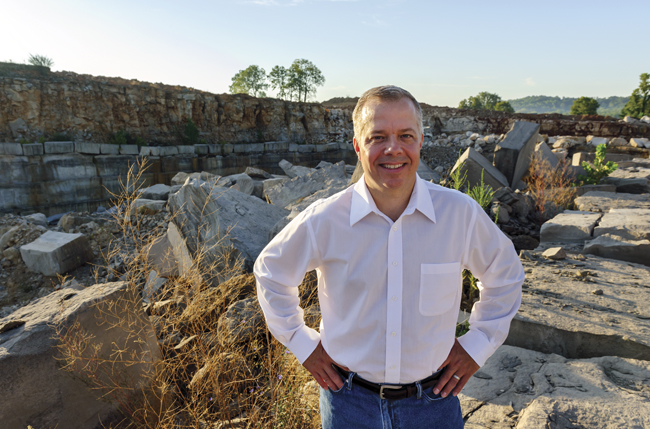BY JANET MANDELSTAM
The building material that likely has had the greatest effect on American architecture is found in just three counties in southern Indiana.
Monroe, Owen, and Lawrence counties provided the Indiana limestone that was used in the rebuilding effort after extensive fires in Chicago and Boston in the late 19th century and in such 20th-century landmarks as the Empire State Building, the Pentagon, the buildings of Indiana University, Rockefeller Center in New York, the National Cathedral in Washington, and 35 state capitols, including the Statehouse in Indianapolis.
“From an architectural point of view, limestone played a truly big role in the building of the country,” says Todd Schnatzmeyer, executive director of the Indiana Limestone Institute of America, based in Bedford.
Promoting the limestone industry and providing technical support to architects, designers, and contractors in the use and maintenance of the stone is the mission of the institute, which was formed in 1928. Its members are the seven Indiana quarries—the first one began operating in 1827—and more than 50 fabricators of Indiana limestone throughout the United States. Associate members include engineers, architects, and restorers.
Schnatzmeyer, an architect by trade, joined the institute in 2011. “I’m relatively new to this industry,” he says, “but when I was an architecture student, my professors used to drill into us to use real materials. If you want something to look like stone, use stone.” Now that’s Schnatzmeyer’s mantra.
“There’s an impression out there that limestone is prohibitively expensive, but look at the performance of the stone, its longevity, reliability, and beauty,” he says.
Indiana limestone is available in two colors—buff and gray—and four grades as determined by the fineness of the grain. Once architects have made their choices, the institute offers a free review of specifications and drawings.
The institute also produces numerous publications, including the Indiana Limestone Handbook, now in its 22nd edition, which can be downloaded gratis from the institute’s website, iliai.com.
Architectural styles have changed many times in the nearly two centuries since the first Indiana quarry opened, but Indiana limestone has remained a building material of choice. With its storied past, limestone has an equally bright future, Schnatzmeyer says. There’s still a 500-year supply in the ground.
















